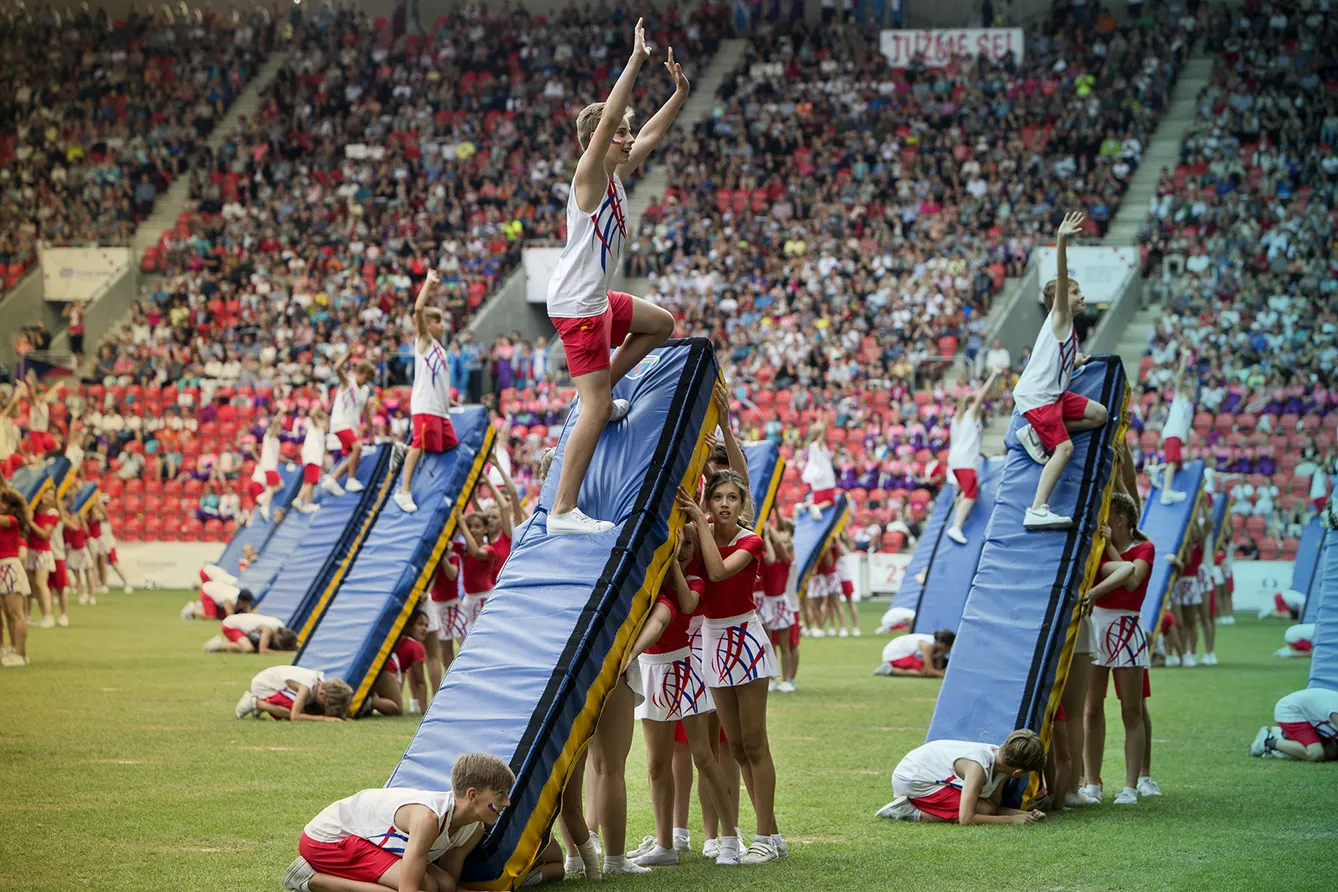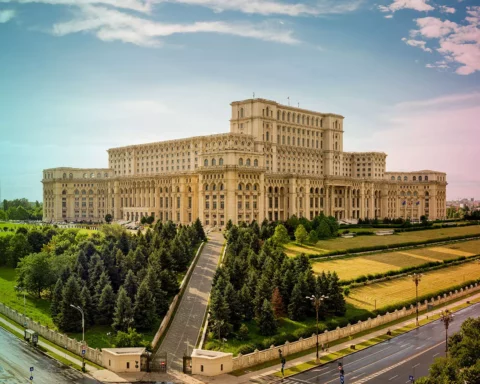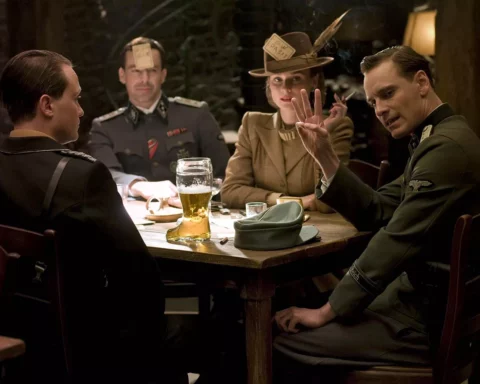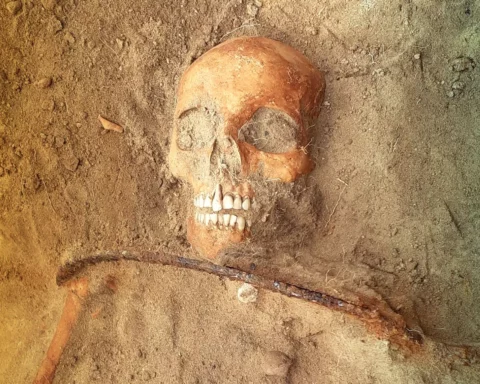Sokol: Sport, Občanstní, Komunita, Osobnost, Laskavost or in English: Sport, Patriotism, Community, Personality, Courtesy. That is the motto and identity of the Sokol (Falcon) physical education association, whose history dates back to 1862.
Czechs spreading their wings
The origins of the Sokol date back to the 19th century, to the times when Czechia was still part of the Austro-Hungarian monarchy. Its foundation is closely linked to the growing patriotic sentiment within the monarchy. And no wonder many of its founding members were prominent politicians, writers, and artists.
The Sokol itself was then officially founded on 16 February 1862 by 75 crucial figures in Czech history. But the most important ones were Jindřich Fügner and Miroslav Tyrš. The Sokol was a very active association from the beginning of its existence. In 1862, the first National Pilgrimage to Mount Říp took place. Mount Říp has an irreplaceable place in Czech history, and the presence of Fügner and Tyrš was a matter of course.
The Sokol rapidly gained popularity—thanks to its patriotic orientation and the breadth of its exercise programs. Most of the physical education clubs of that time limited themselves to gymnastics and other basic exercises. But the Sokol was different. Its members learned boxing, fencing, or athletics. The Sokol also had a rich social and cultural life. There were educational lectures, musical, theatrical, and puppet troupes, concerts, balls, and entertainment.


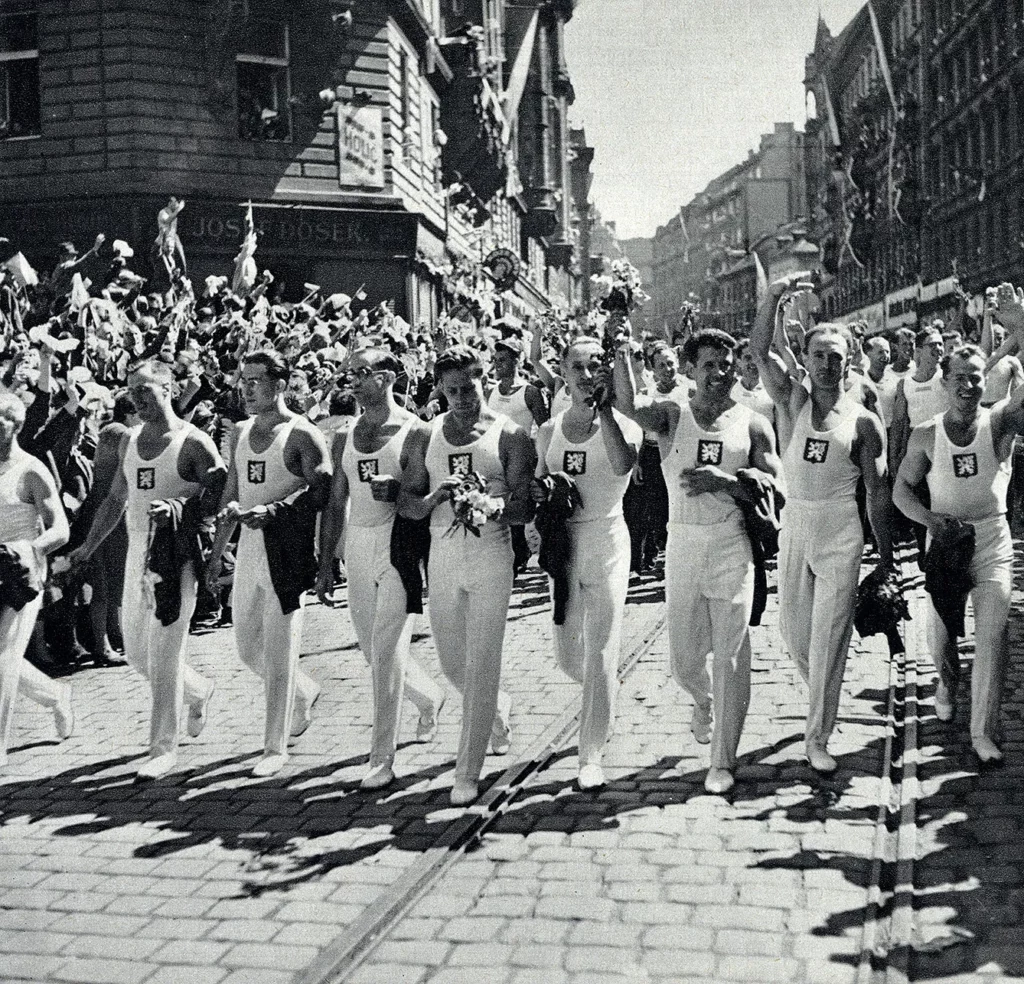
Golden Era of the Sokol, Golden Era of the Republic
During the First World War, the Sokol was already an organization of national importance. With the underway, patriotism in Bohemia and Moravia grew stronger and stronger. The Austrian authorities became so afraid of the Sokol leaders that they disbanded their Directing Committee.
No wonder. Most of the Czechoslovak legionaries who fought against Austria-Hungary for the independence of Czechoslovakia were active members of the Sokol. One of the main political fighters for freedom, Tomáš Garrigue Masaryk, later the first president, was also a member of the Sokol. And as Masaryk remarked after the end of the war: “Without the Sokols, there would be no legions; without the legions, there would be no Czechoslovakia.”
And it was during the so-called First Republic, of which Masaryk was president, the Sokol experienced its true boom. In the First Republic period, i.e., 1918-1938, the Sokol had over a million members. Almost every village had a so-called Sokolovna (Sokol Gym), where the members gathered for exercise and education.
Two dictatorships and the post-revolutionary return
During the Nazi occupation, the Sokol was banned, and many of its leaders ended up in prison and concentration camps. Many Sokol members then became very active members of the resistance. Some 14,000 were imprisoned during the war. Over 2,500 Sokols died.
Although the Sokol was fully restored after the end of the Second World War in 1945, its activities did not last long. The communist takeover in 1948 put a decisive end to the restored activities of millions of Sokol members.
The Communists didn’t hesitate for a second. The leadership of the Sokol was taken over by members of the Communist Party, and the organization, as everyone knew it came to an end. At least it kept the name Sokol until 1956, but the Communists abolished it as a reactionary relic referring to the bourgeois First Republic.
But the Sokol continued to function as an underground dissident organization. Even before the fall of the communist regime, its leaders began meeting secretly and planning to resume their activities. After the Velvet Revolution of November 1989, the Sokol was instantly restored, and the activities of this patriotic and gymnastic organization were thoroughly launched in 1990.
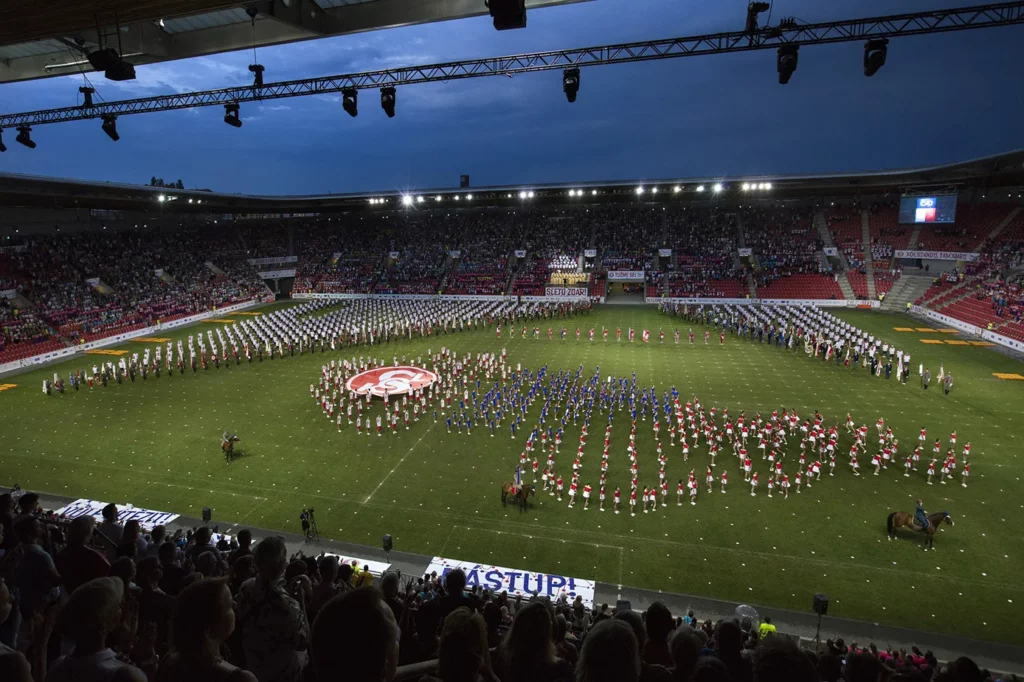
Past traditions and present activities
Nowadays, the Sokol has over 160,000 members and 3,500 trainers across over 1,000 Sokol clubs. From its early days, the Sokol started operating overseas, which was further expanded during the communist dictatorship. Sokol is still present in 15 countries across the Globe, for example, in the USA, Germany, and Sweden.
The culmination of all Sokol activities is the so-called Slet (gathering). Thousands of practitioners from all over the Czech Republic, Slovakia, and other Sokol organizations abroad come to the Slet and perform their carefully planned choreographic exercises.
The first Slet was held in 1891, and 8,000 practitioners practiced in front of 7,000 spectators. The last Sokol Slet, numbered 16, took place five years ago in 2018, celebrating the 100th anniversary of Czechoslovakia, and was attended by 13,000 Sokols. The 17th All-Sokol Gathering is then scheduled for 2024.
Although the Czech Sokol is 161 years old, it is not going anywhere. Its members still train, love their country, and participate in developing civic life in the Czech Republic and abroad. And whether or not one is a Sokol, one should follow the important Sokol motto “Healthy body, healthy spirit! In mind, a country, in arm, strength!”


